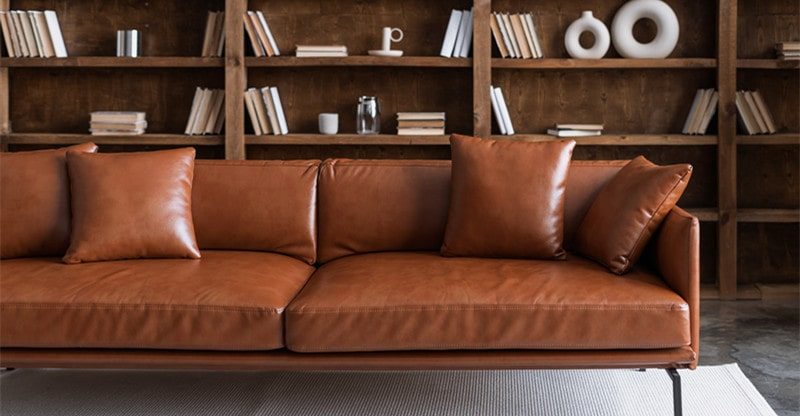7 Sofa Materials Compared
When choosing a sofa, one important aspect to consider is the material. The material can have an impact on the cost, comfort, durability, and how easy it is to clean. Below are 7 popular sofa materials compared to help you choose the right one.
Cotton
Cotton is prized for its softness. It’s also great at resisting wear and does not fade over time like some other fabrics. The downsides of cotton are that it can wrinkle over time, plus it can stain easily if you don’t clean up spillages quickly. Hand-held steamers may be able to get out wrinkles, while there are certain cleaning solutions that can help remove stains.
Leather
Leather sofas are a good choice for homes with kids and pets – leather is easy to clean and hypoallergenic. Leather can also have a luxurious look and feel to it that appeals to many people. Unfortunately, scratches on the leather can look more prominent, plus leather is sensitive to temperature changes.
Adding a throw to your sofa can make it more comfortable in extreme temperatures and can protect it from scratches, although you may want it to be constantly covered up. Most leather sofas do not require too much maintenance compared to many other fabrics, however, using a leather conditioner can still be beneficial for extending your sofa’s life – it’s worth doing your research to find the best leather conditioner.
Linen
Linen is a very similar material to cotton in that it’s very soft and hard-wearing. Linen is even tougher than cotton and may be better for homes with pets that have claws. Unfortunately, linen is prone to wrinkling and fading and can stain quite easily if you don’t keep it on top of cleaning, which makes it generally unsuitable for homes with kids. As with cotton, you can remove wrinkles with steam, and you can buy products to help get rid of mild stains.
Silk
Silk is one of the most elegant upholstery materials available, and its softness is superior to almost every other material. It’s a very strong material that does not wrinkle. However, it is much more easily damaged by moisture (which can cause irremovable stains) and sunlight (which causes fading).
For this reason, you should avoid foods and liquids around these sofas and keep them away from windows where they may receive direct sunlight. They’re generally best suited to low-traffic areas.
Synthetic fabric
There are many synthetic fabrics used in sofa manufacture including polyester, nylon, acrylic and olefin. These materials are sometimes favoured over natural materials because of their greater resistance to wrinkling, fading and tearing. Some are even easier to clean than natural fabrics and more stain-resistant. Synthetic fabrics may pill more than natural fabrics. They also aren’t as eco-friendly of course, which can put some people off.
Synthetic leather
Synthetic leather materials like vinyl can offer the toughness of leather without costing as much money. This makes them a popular option for those that love the look of leather but cannot afford the price of the real thing. Unlike real leather, synthetic leather also does not contain animal products and is therefore favoured by many vegans. It is unfortunately made from plastics, so it’s not the most eco-friendly material.
Wool
Wool is fast becoming one of the most popular sofa materials. Compared to other fabrics, it’s much better at resisting staining, fading and wrinkling. At the same time, it does not pill like many synthetic fabrics and is still natural. Wool is very comfortable and stays warm in winter. It is not as ideal for hot climates as it traps heat. It’s also quite an expensive material compared to many other fabrics, which is something to bear in mind.



